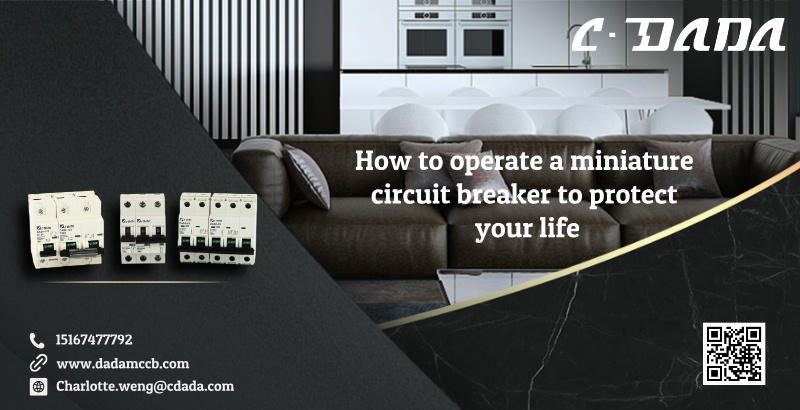In the field of electrical safety, miniature circuit breakers (MCBs) are vital components that provide essential overload and short-circuit protection. With over 30 years of manufacturing experience, Shanghai Dada Electric Co., Ltd. is committed to manufacturing high-quality circuit breakers, ensuring that they provide stable performance and reliability across the country. This blog aims to provide a comprehensive guide on the installation, operation and maintenance of miniature circuit breakers, ensuring that users can maximize their effectiveness while minimizing risks.
Installation Specifications
Before installing a miniature circuit breaker, be sure to ensure safety. Be sure to disconnect the power supply during installation to avoid electric shock. Choosing the right installation location is equally important; the miniature circuit breaker should be installed in a dry, well-ventilated environment without corrosive gases. This not only facilitates operation, but also simplifies maintenance work.
When wiring, be sure to use copper wires that match the rated current of the miniature circuit breaker. Make sure the connections are tightened according to the torque requirements specified in the product manual. In addition, double-check that the live and neutral wires are connected to the corresponding terminals to prevent any reverse connection that could cause circuit malfunctions.
Operational Specifications
After installing a miniature circuit breaker, you must handle it with care. Before closing the circuit, make sure there are no faults. When disconnecting the circuit, the handle should be completely disconnected to prevent accidental reconnection. Always avoid manually forcing a tripped circuit breaker to close; any faults must be resolved before attempting to reset the device.
Selecting the right tripping curve is essential for effective overload and short-circuit protection. Depending on the type of load (resistive, inductive or motor drive), the user should choose between B, C or D tripping curves. For example, the D tripping curve is particularly suitable for motor applications. Regular checks should be made to ensure that the breaking capacity of the miniature circuit breaker corresponds to the maximum short-circuit current of the circuit to prevent potential breaking failures.
Maintenance and Inspection
To ensure the service life and reliability of the miniature circuit breaker, regular maintenance and inspection are essential. Users should check the terminal blocks for signs of looseness and inspect the housing for damage every month. In addition, it is recommended to verify the leakage protection function using the test button to ensure that the miniature circuit breaker is working properly.
Cleanliness and dust prevention are essential to maintaining the functionality of circuit breakers. Regular cleaning of surfaces to remove dust is essential, as accumulated debris can hinder heat dissipation and cause malfunctions.
If a circuit breaker trips frequently, or if internal components (such as bimetal strips) show signs of deformation or aging, be sure to replace them promptly. Prompt replacement can prevent further failures and ensure continued safety.
in conclusion
Shanghai Dada Electric Co., Ltd. understands the importance of electrical system safety and reliability. Our miniature circuit breakers are designed to meet the highest performance standards, ensuring your electrical equipment is safe and efficient. By following the installation, operation and maintenance guidelines outlined in this blog, users can effectively use miniature circuit breakers to protect circuits and improve overall safety. Please trust our expertise and experience, we have been leading the circuit breaker manufacturing industry for more than 30 years.
